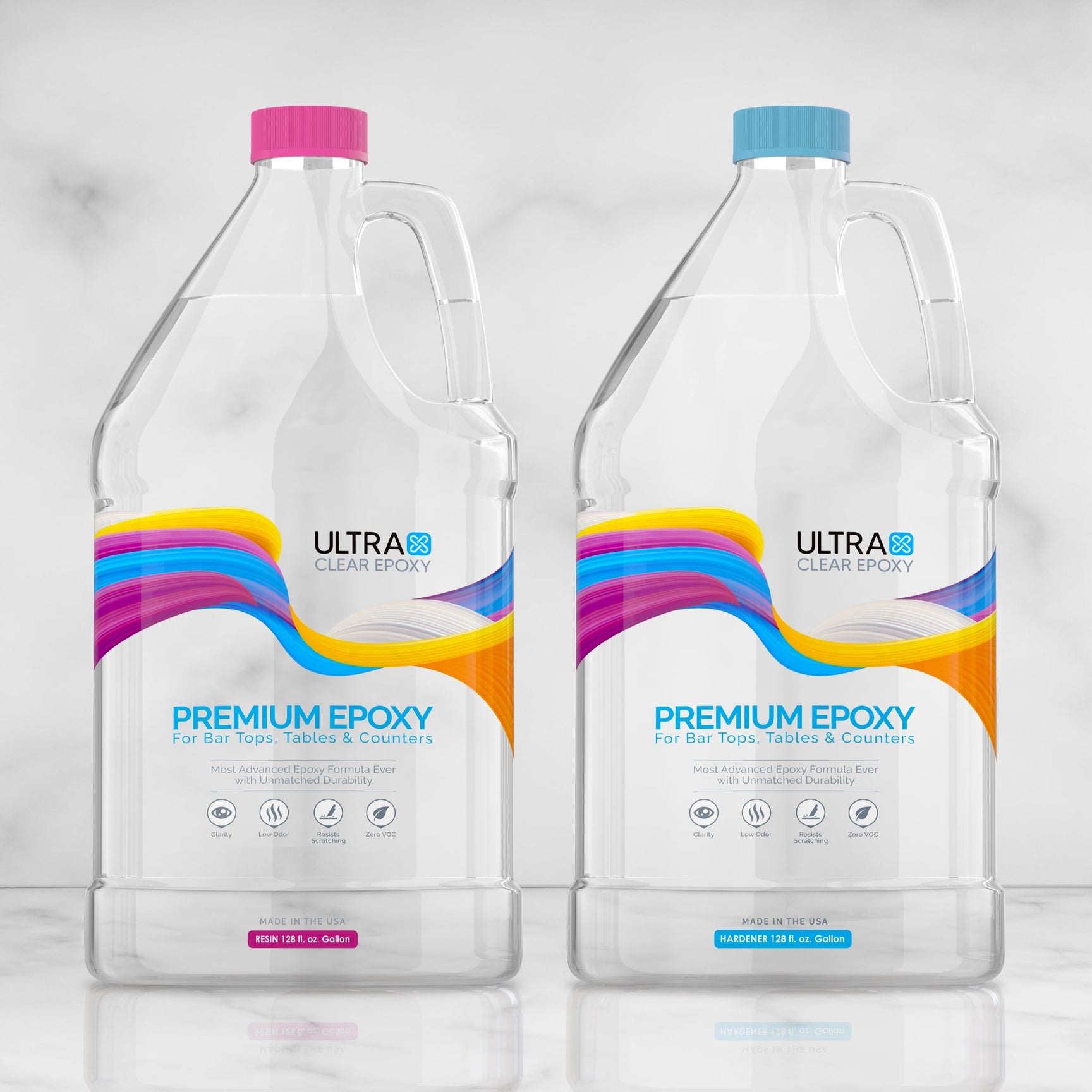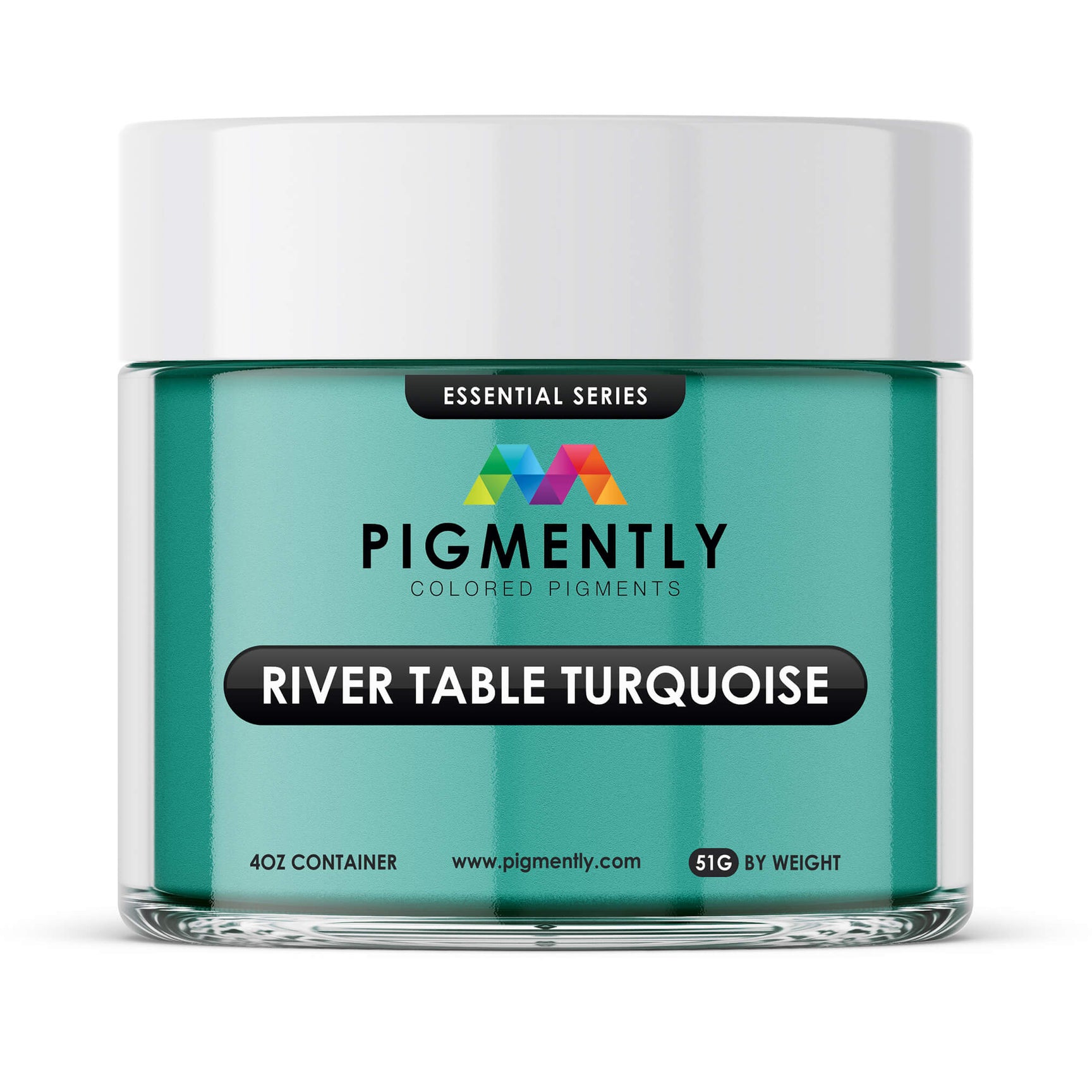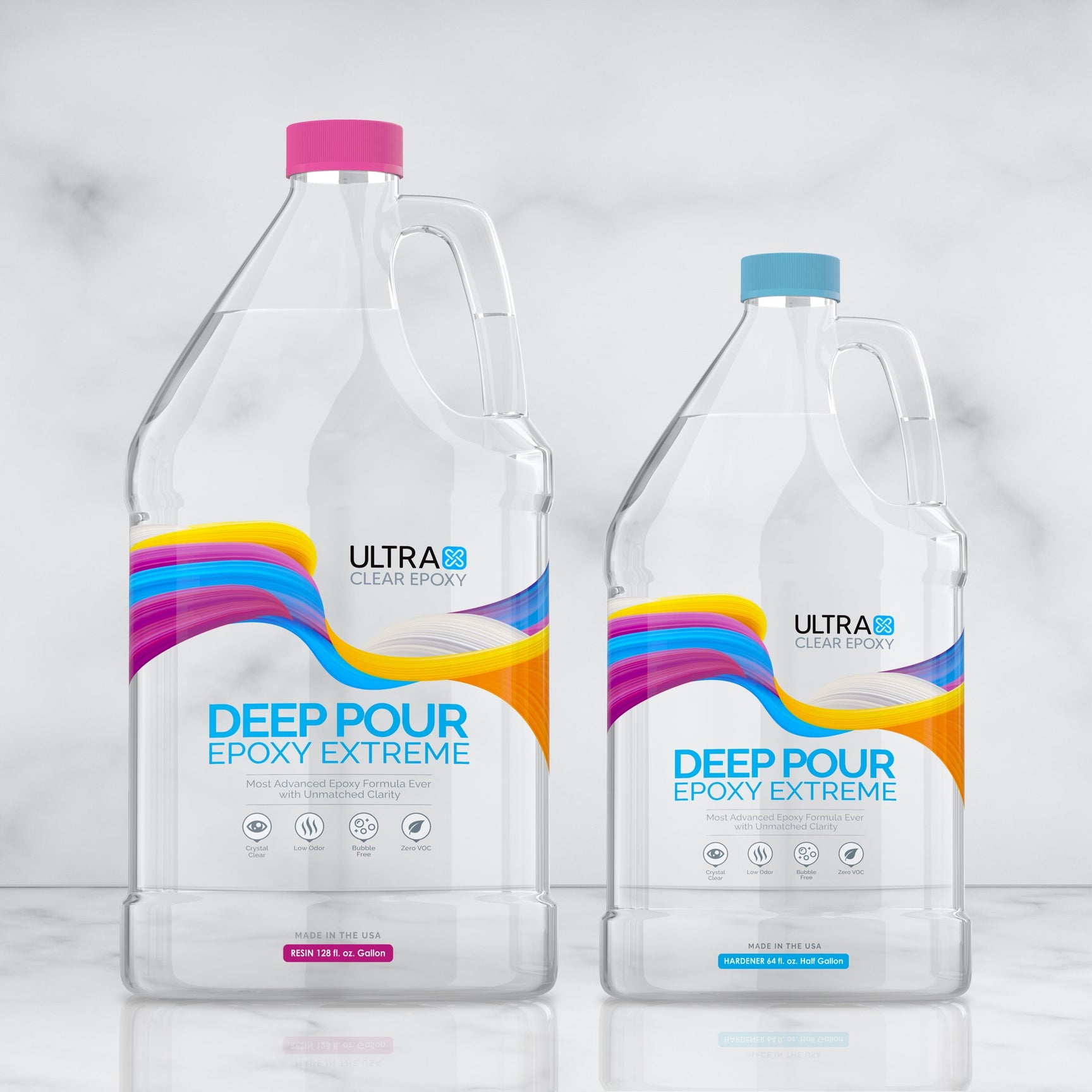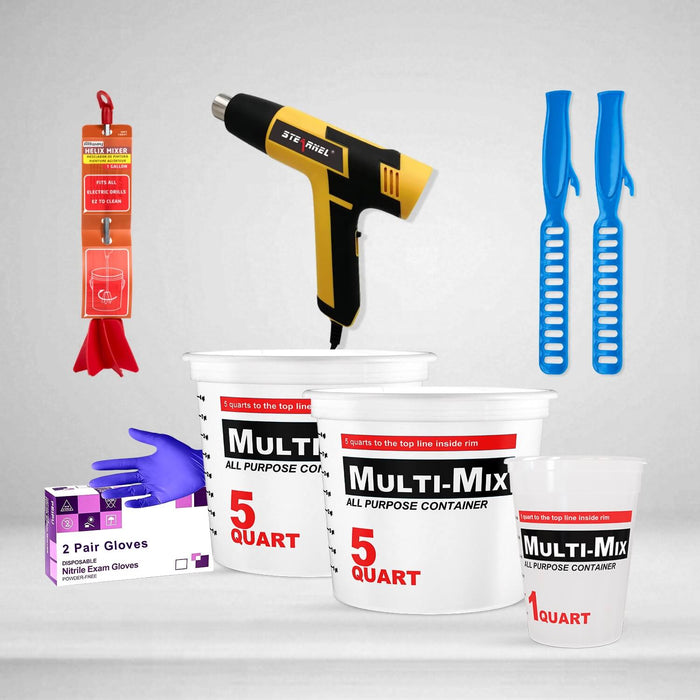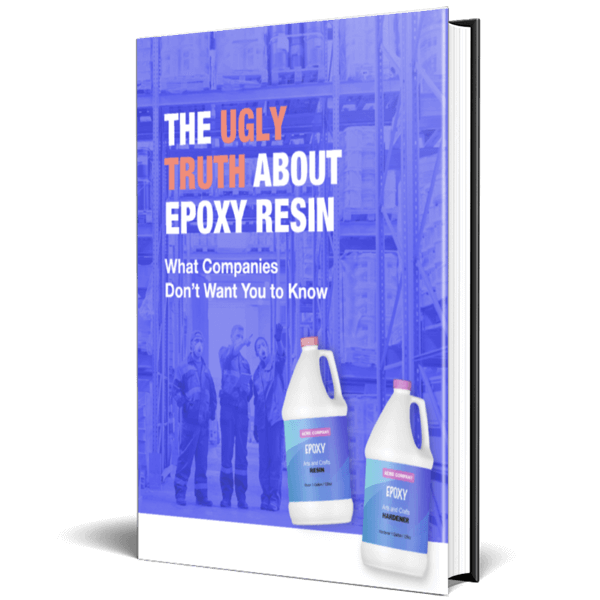A successful epoxy project will always go through the important core phases. These include measuring, mixing, and applying. And it's in these phases, as well as any additional optional ones, where epoxy can be mishandled, leading to issues like stickiness or an incomplete cure.
In this article, we'll explain why your table top epoxy might be sticky, as well as how to avoid common issues with epoxy that could result in stickiness and other flaws.
Why table top epoxy gets sticky sometimes
Throughout the epoxy process, there is an uncomplicated list of steps meant to be followed carefully. While epoxy is not generally a complex sealant to work with, it nonetheless requires care and comprehension. Even then, however, accidents can happen. Whether through carelessness or a lack of understanding, epoxy users may end up with sticky epoxy finishes.
But why does table top epoxy sometimes get sticky? Below is a list of common reasons:
- A low-quality epoxy was used for the project.
- The epoxy was inaccurately measured.
- The resin wasn't evenly blended within a mixing container.
- There was too much moisture in contact with the finish as it cured.
Let's take a look at each reason in greater depth.

Reason #1: A low-quality epoxy was used for the project.
When it comes to choosing an epoxy for your project, it's essential to select one that's high-quality, generally from a credible source.
These days, there are many different brands of epoxy resin available to consumers. Unfortunately, though, the variety of brands only seems diverse at a glance. The truth is that there are several low-cost budget brand epoxy products being sold under numerous fake brand names. This practice is especially prevalent on large 3rd-party marketplaces like Amazon or eBay.
The state of epoxy: a flooded market that obscures quality
What happens in these scenarios are two things. First, the actual manufacturer floods the results pages for things like "epoxy resin" or "table top epoxy" with the same product throughout the listings, making it seem like you're choosing from a wide range of dealers when in reality it's just the same producer many time over.
Subpar resin for a dubious price
The second issue is that these epoxy products often have a suspiciously low cost. There's an old adage that goes "You get what you pay for." And this is particularly true with epoxy resin. Low-cost epoxy products often have flaws in their formulas. Because these products tend to be manufactured overseas and imported, and aren't beheld to the regulatory standards of the U.S., their producers are able to cut corners on quality and safety, resulting in substandard resin products being distributed to unsuspecting users.
A premium epoxy solution
To avoid the issues of subpar resin that doesn't hold up, focus on obtaining a high-quality epoxy resin from a reputable dealer.
At UltraClear Epoxy, we offer only premium epoxy resins made in the USA. These resins are each held not only to quality and safety regulatory standards of the U.S., but also of our own ideals, providing a quality product that will stay strong for years and years.
In our store, you can find our UltraClear Bar & Table Top Epoxy. This resin not only cures crystal-clear but also provides our strongest epoxy finish, capable of resisting numerous forms of damage without issue, with an expected lifespan of more than 7 years.
Reason #2: The epoxy was inaccurately measured.
Before you can mix up a resin batch, you first have to measure out the components. Epoxy comes in two separate components that only harden once blended together.
But each epoxy also has its own mixing ratio that the user must abide by for optimal results. In the case of most table top epoxies—including our UltraClear Bar & Table Top Epoxy—that ratio is 1:1, resin to hardener.
Other epoxy types may differ from this. For instance, our UltraClear Deep Pour Epoxy has a mixing ratio of 2:1, resin to hardener.
When measuring out your epoxy batch, do so by volume, not weight, as the components may weigh differently.
We've written a guide to measuring epoxy properly—have a look here!
Reason #3: The resin wasn't evenly blended within the mixing container.
Once an epoxy batch has been measured out, it's time to mix the components together. The methods used are usually determined by the size of the batch.
Use stir sticks for small batches.
For small batches, manually mixing by hand is best, using stir sticks to blend the batch together. Avoid using a power drill, which is so strong that it tends to pull in air, creating numerous air bubbles throughout the epoxy, which can be a pain to remove.
Use a power drill and a stir stick for large batches.
For large batches, a power drill is preferable. Because large batches fill the container deeper, the mixing drill bit can be lowered enough that it doesn't pull in air while running.
Additionally, using a power drill puts less physical strain on your arm/wrist and ensures you'll be able to finish mixing the larger amount of epoxy within the necessary timeframe.
Though optional, we also recommend intermittently (after a minute or two of mixing) using a stir stick to scrape the sides and bottom of the container. This will dislodge any resin component that gets stuck to the sides, ensuring a full, comprehensive blending of both epoxy components.
Once the mixing is complete, you'll have a limited amount of time to apply it to your project substrate. For table top epoxy, this can be as low as 5 minutes. For deep pour epoxy, it tends to run longer, allowing you a full 25 minutes to carefully pour it into place.
For tips on mixing up resin batches, check out our guide here!

Reason #4: There was too much moisture during the epoxy's curing phase.
Last on our list of reasons is moisture. Though epoxy is waterproof once cured, it needs a low-humidity environment without moisture contact to properly reach that fully cured state.
When working with epoxy, notably while it's curing, keep the relative humidity levels of the workspace below 60%. It's also important to maintain a warm—but not hot—temperature, ideally around 75°F.
Perform your project in a controlled space—or construct your own.
The best way to accomplish this is to perform your epoxy project in a climate-controlled environment. If that's not possible, you can also construct your own temporary enclosure for the project work space, through the use of pvc piping, painters plastic, and some duct tape. Within that, space heaters can be placed to sustain the appropriate temperature of 75°F.
Other issues than can occur aside from sticky epoxy
Aside from a sticky surface, other problems can occur with epoxy when not handled correctly, such as:
- Air bubbles—these can be removed with a heat gun, but with too many, it becomes difficult to get them all.
- Yellowing—a common result of aging in epoxy or overexposure to UV radiation. Learn how to prevent this here.
- Murky/cloudy surfaces—a common occurrence when epoxy cures in a room with heat or humidity too high. Read about ideal curing practice here.
UltraClear Epoxy: Resin Products of Unmatched Quality
As with any material, epoxy resin has both pros and cons. But no other sealant has so few weaknesses, and that's what puts epoxy above all other options when it comes to being a finish for high-traffic fixtures and furniture such as countertops, table tops, and bar tops. And among epoxy resin products, there are none that match the quality of UltraClear.
You can find our UltraClear Epoxy products on the following pages:
- UltraClear Bar & Table Top Epoxy: The classic choice for bar tops, countertops, and table tops. Rock-solid, waterproof, and crystal-clear.
- UltraClear Deep Pour Epoxy: Our deep pour casting resin. Ideal for thick layers, such as those needed for river tables.
- UltraClear Art & Craft Epoxy: Our arts and crafts resin, designed for smaller artistic endeavors which typically involve resin molds and require a bit more fluidity than bar top epoxy.
With high chemical and physical resistance, UltraClear resins can withstand and endure many forms of wear and tear without breaking a sweat or showcasing any cosmetic damage.
Plus, in addition to its ease of application, they also require little upkeep to maintain its pristine appearance. With a high-quality epoxy finish, you can expect a minimum lifespan of 7 years, with no need for reapplication. Beyond that, it's a breeze to renew that coating, requiring only a light sanding and a fresh layer of epoxy.






